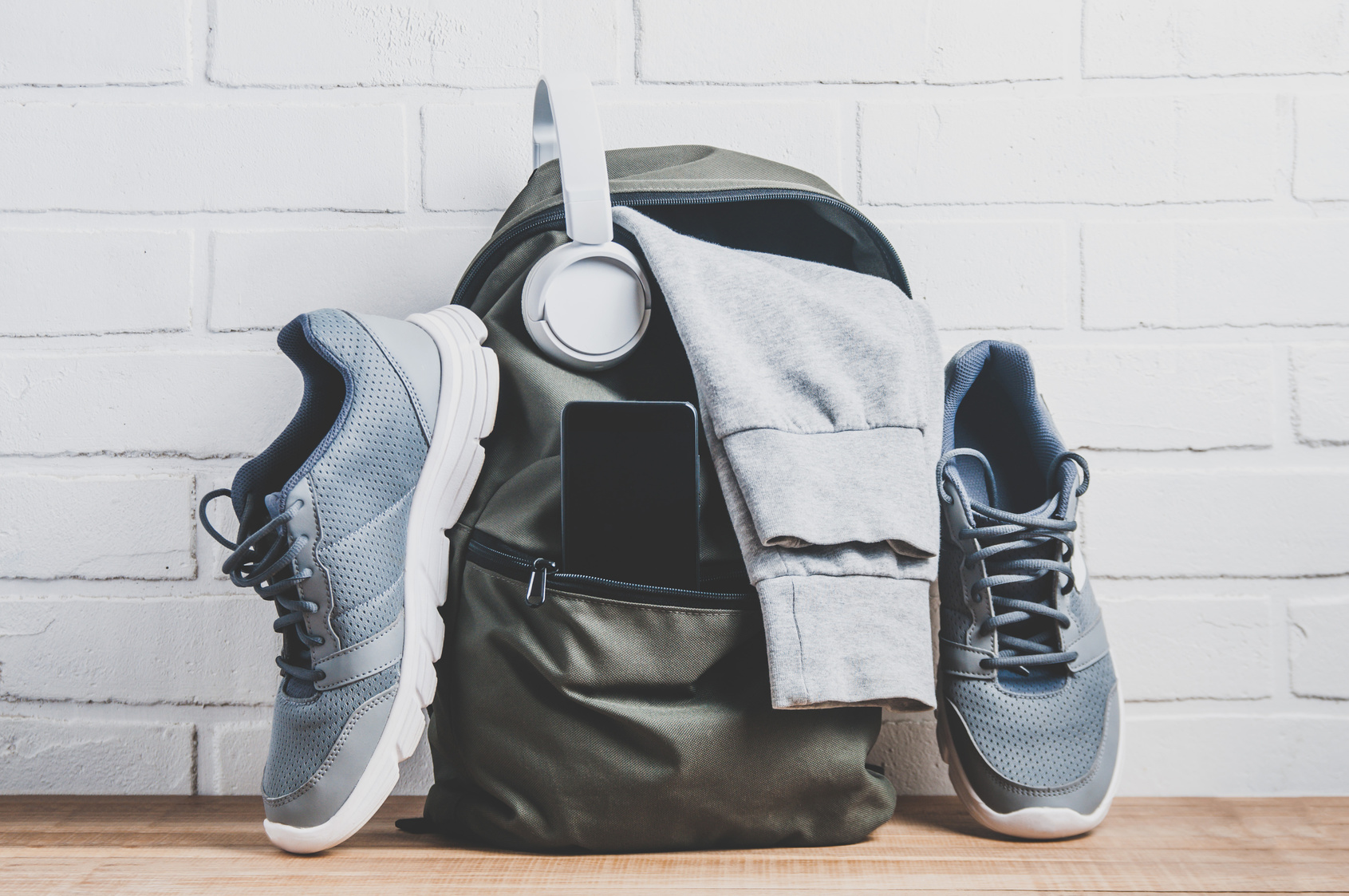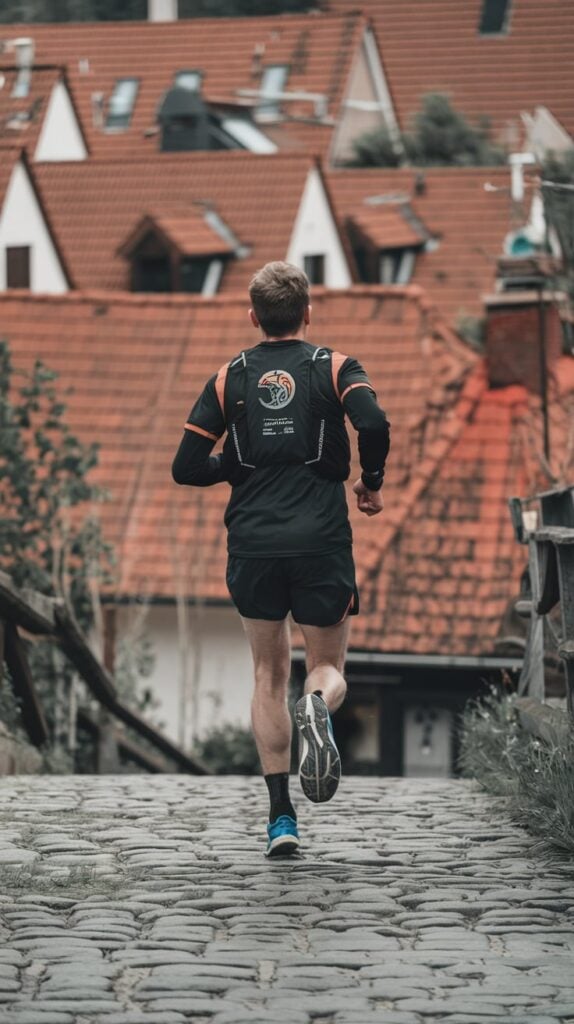L Let me tell you the truth: Most runners avoid: your workouts don’t make you stronger — your recovery does.
That 12-mile long run that left your legs screaming? That track workout that had you gasping for air? Those were just the stress.
The growth happens later — when you fuel right, sleep deep, and give your body the chance to rebuild. Ignore recovery, and you’re setting yourself up for plateaus, injuries, or burnout.
Nail it, and you’ll bounce back faster, crush workouts with fresh legs, and keep stacking fitness for years. I know you might already know about this but I’d to make it clear from the get-go.
Recovery isn’t a passive thing you “let happen.” It’s a discipline. A plan.
And when you get it right, it becomes your secret weapon for breaking PRs and building a running life that actually lasts.
This guide is your blueprint. No gimmicks. No magic wands. Just the same proven recovery strategies that elite runners, seasoned coaches, and long-haul athletes swear by — adapted for real runners with real lives.
Table of Contents
- The Four Phases of Recovery – Immediate, short-term, daily, and long-term essentials
- Post-Run Cooldown Routine – The moves and methods that speed repair
- Refueling for Recovery – Nutrition timing, carbs-protein balance, and hydration
- The Sleep Advantage – How rest supercharges muscle repair and performance
- Foam Rolling, Stretching & Mobility – What works, what doesn’t, and when to do it
- Recovery Tools & Gear – Separating science from hype
- How Long Recovery Really Takes – By workout type, race distance, and effort level
- Active vs Passive Recovery – When to move, when to completely rest
- Strength Training During Recovery – Smart integration without sabotaging rest
- Post-Race & Off-Season Recovery – How to rebuild strength and motivation
- Mindset Reset – Recharging the mental game after a goal cycle
- Common Recovery Mistakes – 7 habits that quietly kill your progress
- Recovery by Race Distance – Tailored strategies for 5K through ultras
- Final Word: Recovery as a Discipline – Making rest your competitive edge
Let’s get to it.
Recovery Happens in Phases—Don’t Miss Any
Recovery isn’t just “chill and hope it works out.” It happens in four distinct stages, and each one matters.
| Phase | When | What to Focus On |
| Immediate | 0–15 min after run | Cooldown walk, breathing, hydration |
| Short-Term | 15–90 min after run | Refuel with carbs + protein, light mobility, nervous system reset |
| Daily | 24–48 hrs | Sleep, nutrition, soreness management |
| Long-Term | Weeks to months | Deload weeks, off-seasons, full rest periods |
Each of these stages sets up the next. Walk off your run to flush the legs. Refuel fast to rebuild. Sleep hard to adapt. Take down weeks so you don’t burn out.
Think like a pro. Train hard, yes—but recover harder.
Cooldown: What to Do Right After You Stop Running
You just finished your run. Don’t flop onto the grass. Don’t sit on the curb scrolling Strava. That cooldown window is pure gold—here’s what to do:
1. Keep Moving (5–10 Minutes)
Walk. Just move. Let your heart rate come down gradually. This keeps blood from pooling in your legs and helps circulate waste out of your muscles. Think of it as hitting the brakes smoothly, not slamming them.
2. Breathe to Recover
Try some slow breathing to shift into recovery mode. Something simple like:
- Inhale for 4 seconds
- Hold for 4
- Exhale for 4
- Hold for 4
Do that a few rounds and you’ll feel the tension start to melt. This activates your parasympathetic nervous system—the “rest and repair” switch your body needs to start healing.
3. Rehydrate Right Away
Water first. Electrolytes if it’s hot or you’re a salty sweater. You don’t need to chug a gallon—just start sipping. If you lost a pound or two during your run, aim to replace 16–24 oz of fluid per pound lost.
Your pee should be light yellow within a few hours. If it’s dark, drink more.
4. Gentle Mobility Drills
While your muscles are still warm, do some easy, flowing movements:
- Leg swings
- Hip circles
- Arm sweeps
- Light downward dog or lunges
Keep it relaxed. Nothing forced. No deep holds. You’re just keeping things moving and signaling to your body, “Hey, we’re done running—time to recover.”
Skip Deep Static Stretching
Don’t dive into 60-second hamstring stretches when your legs are cooked. That can actually do more harm than good. Save deep stretching for later—like post-shower or in the evening when you’re fully relaxed.
Post-Run Nutrition: Eat Like It Matters
You finished the run. You’re sweaty, maybe wrecked, maybe floating. Doesn’t matter if it was 3 miles or 20 — your next move is crucial: refuel.
This isn’t just about filling the hunger hole. It’s about rebuilding your body so you can come back stronger tomorrow. If you skip it or get lazy with junk food, don’t be surprised when your next run feels like garbage.
Here’s how to recover like a runner who wants to improve:
Timing Matters: Eat Within 30–90 Minutes
Your muscles are in prime recovery mode right after a run — blood flow’s high, enzymes are doing their thing, and they’re begging for fuel. Here’s my golden rule: Try to eat something within 30 minutes of finishing — definitely within 90. Doesn’t have to be a full meal. Just start the recovery process.
→ Snack first, then eat a solid meal within 1–2 hours.
And if you’re too nauseous post-run? Go liquid. Chocolate milk, smoothie, protein shake — get something down. Your legs will thank you tomorrow.
Don’t Forget Fluids & Electrolytes
Post-run hydration isn’t just “grab a water bottle.” Especially after a hot or sweaty effort, you need to replace what you lost — and plain water sometimes isn’t enough.
Add electrolytes if it was a long or hot run:
- Sports drink
- Electrolyte tab
- Homemade fix: water + pinch of salt + splash of juice
- Salty snack with your recovery meal
Quick check: If your pee is dark, you’re behind. Aim for light yellow over the next couple of hours. Hydration is part of recovery — not a separate job.
Match Intake to Effort
Short, easy run? → Light snack might be enough — maybe an apple with almond butter, or some trail mix.
Long or hard run (especially over 60 minutes)? → Snack ASAP, then a real meal when hunger returns.
Don’t wait until you feel ravenous. If you do, you’re already behind. What’s more? Prep your post-run fuel ahead of time. You don’t want to be hunting through your kitchen sweaty and depleted. Set that banana and protein bar out before you even lace up.
Quality Counts — Junk Food Can Wait
You burned a lot of calories — that doesn’t mean you earned a junk food binge right away. Your muscles need real nutrients, not processed filler.
I beg you to focus on:
- Complex carbs (oats, rice, fruit, potatoes)
- Lean proteins (eggs, chicken, Greek yogurt, beans)
- Healthy fats (nuts, seeds, olive oil, avocado)
Skip the greasy drive-thru right after the run. That bacon cheeseburger can wait. Fuel your body first. Then have your treat later — when the rebuild is underway.
Sleep: The Most Underrated Performance Booster
You want to get stronger? Recover faster? Show up ready to crush workouts instead of dragging through them?
Then stop treating sleep like it’s optional.
I’ve worked with enough runners to know this: you can nail every workout, eat all the right carbs, and still stall out if you’re shortchanging sleep. Recovery doesn’t just happen when you’re foam rolling—it happens deep in the night, when your body’s doing the real behind-the-scenes work.
Let’s break it down.
Deep Sleep = Hormone Magic & Muscle Repair
Your toughest training days leave micro-tears in your muscles. You don’t grow stronger from the run itself—you grow stronger while recovering from it. Deep sleep is key here.
During the deepest stage (slow-wave sleep), your body releases a flood of human growth hormone (hGH)—up to 70% of your daily dose. That’s what triggers muscle repair, tissue rebuilding, and tendon healing.
No protein shake can replace what your body makes naturally overnight. If you skip sleep, you skip the recovery jackpot.
As one sleep doc puts it: “Sleep isn’t a luxury—it’s a necessity. Skip it, and you’re shortchanging your gains.”
Poor Sleep = High Cortisol, Slower Recovery
Now here’s the flip side: when you don’t sleep enough, your body fights back. You pump out more cortisol, the stress hormone. That messes with muscle repair, elevates inflammation, and keeps your system on edge. You’ll feel tired… but wired.
Ever woken up after a red-eye or late night and felt achy, puffy, and irritable? That’s not just poor mood—it’s your body in stress mode. Elevated cortisol also blunts glycogen replenishment, which means you recover slower and hit workouts with less in the tank.
Lack of sleep even messes with your insulin sensitivity, which affects how well you restock carbs in your muscles.
Bottom line? Bad sleep = less rebuild, more breakdown.
How Much Sleep Do You Actually Need?
The sweet spot for most runners? 7–9 hours a night, with the upper end better if you’re training hard. Some elites clock 9–10 hours a night and toss in a nap, too.
Eliud Kipchoge? Yeah, he reportedly logs around 10 hours of total sleep daily. No surprise he’s breaking records.
You don’t need to nap daily, but here’s the takeaway: more (within reason) is better. Even a short bump in sleep can lead to better performance. One study showed runners improved race times by ~3% just by adding an extra hour of sleep per night for a week.
Not sleeping well the night before your race? Don’t panic. What matters more are the two or three nights before that. So “bank sleep” leading into race week.
As the saying goes: “The night before the race doesn’t matter—two nights before does.”
How to Actually Sleep Better (Not Just Longer)
Getting to bed is only half the battle—the quality of your sleep matters just as much. Here’s how to level up your rest:
- Keep a Regular Schedule. Go to bed and wake up at the same time. Your recovery hormones love rhythm.
- Cool, Dark, and Quiet. Set your room to ~65°F (18°C), block out light with blackout curtains or a mask, and shut out sound with earplugs or white noise. Treat your bedroom like a recovery cave.
- Wind Down Right. Ditch the phone an hour before bed. No emails, no doomscrolling. Read a paper book. Do some gentle stretching or yoga. Legs-up-the-wall pose can help drain tension.
- Watch What You Eat & Drink. A beer after your long run? Cool. But booze before bed can mess with sleep quality. Same with late-night heavy meals. Wrap up eating at least 2 hours before lights-out.
- Naps (Done Right). If you’ve got time, a 20–30 minute nap after a hard session can work wonders. Just don’t nap too late in the day or you’ll mess with your night sleep.
Foam Rolling, Stretching & Mobility: What’s Worth Your Time
We all want faster recovery. But let’s be honest—after a tough run, half of us just flop on the floor and scroll Instagram instead of doing anything useful. But if you’re serious about feeling better and running stronger, you’ve gotta take care of the machine.
Here’s the real breakdown of what recovery tools actually help—and how to use them like a pro, not like someone attacking their IT band with a foam roller like it owes them money.
Foam Rolling: The Runner’s DIY Massage
Foam rollers are everywhere now, and for good reason. Rolling out your legs after a hard effort is one of the few “recovery hacks” that actually delivers.
Rolling works like a mini self-massage. It increases blood flow, eases tight spots, and helps reset your muscle tone. It’s not magic, but it works—especially if you don’t treat it like a speed bump. Here’s how to do it:
- Roll slowly over major muscle groups: quads, hamstrings, calves, glutes, IT bands.
- Stop and breathe on tight spots—don’t just zip back and forth like a windshield wiper.
- Aim for 1–2 minutes per muscle group, not just a 30-second drive-by.
- Do it after a workout or the next day, especially when DOMS is creeping in.
Skeptical? No worries. Let’ talk science. One study showed that athletes who foam rolled post-workout had less soreness and better performance the next day. That’s a win. It may not fix all your problems, but it helps flush the junk out and makes your legs feel less like lead pipes.
Static Stretching: Overrated (But Not Useless)
Let’s bust a myth: stretching right after a run doesn’t do much for recovery. Holding that quad stretch for 30 seconds at the trailhead? Not helping your DOMS. Not preventing injury either.
But that doesn’t mean stretching is a waste. It’s just a long game—not a quick fix.
Best Uses:
- Use static stretching later, not right after a run. Think: post-shower, before bed, or on rest days.
- Focus on problem areas—hips, hamstrings, calves—but only when your body’s warm.
- Keep it gentle. No forcing splits just because a yoga influencer said so.
The goal here is maintaining healthy range of motion, not turning yourself into a pretzel.
Dynamic Stretching & Mobility Work
This is where the good stuff lives.
Dynamic mobility drills—like leg swings, lunges with rotation, cat-cow stretches—help you stay limber and keep your joints moving like they should. These movements do promote blood flow and help prevent that stiff, robotic runner stride. Here are my favorites:
- Hip mobility: world’s greatest stretch, kneeling hip openers
- Ankle mobility: calf raises, toe taps, ankle circles
- Thoracic spine: cat-cow, open book stretch
You can use these before a workout as warm-up, or on recovery days as a maintenance tune-up. 5–10 minutes a day is all it takes to keep the rust off your joints.
Other Recovery Tools That Actually Help
Let me share with you a few tools that can take your recovery to the next level.
Massage Balls (or Lacrosse Ball Torture)
Perfect for getting into small, nasty spots—like under your glutes or arches of your feet. Sit on one. Find the tight spot. Breathe through the pain.
Massage Guns
These things work—if you use them right. Don’t dig a hole into your quad. Just let the device do the work.
Here how to use it:
- Post-run or the day after
- Gently for 1–2 minutes per muscle group
- Don’t go deep on a fresh injury
It’s like a power tool for recovery—but treat it with respect or it’ll do more harm than good.
Compression Gear
Not gonna lie, compression socks feel amazing after a long run. They help move fluid out of your legs and reduce swelling. Some folks love compression boots, but you don’t need fancy gear. Throw on your socks for a few hours post-long run—you’ll feel the difference.
⏳ How Long Does It Actually Take to Recover?
The million-dollar question: “How long till I’m fully recovered?”
Short answer: it depends. On the run, your fitness level, sleep, nutrition—everything. But here’s a rough cheat sheet:
| 🏃♂️ Run Type | ⏱ Typical Recovery Time |
| Easy 5K jog | 4–8 hours (basically none) |
| Tempo/Threshold (30–60 min) | 24–36 hours |
| Long Run (12+ miles) | 48–72 hours |
| VO₂ Max Intervals | 48+ hours (especially if done right) |
| Marathon (26.2) | 10–14 days (yes, days) |
| Ultra (50K+) | 3–6 weeks (yup, weeks) |
These are ballpark figures. You bounce back faster if you recover smart. But ignore recovery, and those timelines double.
🟢 Easy Runs: Low Cost, High Reward
An easy 3–5 miler at conversational pace? That’s not something you need to recover from—it’s often part of recovery itself. Within hours, your body’s back to baseline. Your legs might even feel better than before.
Just make sure you keep it truly easy. If it turns into a stealth tempo run, that changes the game.
🟠 Tempo Runs / Threshold Efforts
These hit deeper. A solid 30–40 minute tempo might leave your legs a little heavy and your system tapped for a day or two. Usually by 36 hours, you’re back. But don’t schedule another hard run the very next day—your body’s still cooking.
Newer runners? Give it two full days before another speed effort.
🔴 Long Runs, VO₂ Max, and Racing? Buckle In
Long runs (12+ miles) and interval workouts tap into muscle damage, glycogen depletion, and central fatigue. Don’t treat them like your weekday 5-miler. You might feel “fine” the next day, but your system is still recovering underneath.
After a marathon? Take 10–14 days minimum before doing anything intense again. After an ultra? You’re in recovery mode for weeks. That’s just reality. Push through that window, and you’re playing with fire.
Absolutely—here’s your full rewrite of the recovery timing section in David Dack’s trademark gritty, honest, and coach-next-door voice. It’s grounded, science-backed, but sounds like a real conversation between training buddies who know the grind:
Recovery Timing – How Long Do You Really Need?
You just finished a big run. Legs are toast. You feel like you’ve earned a medal—and a nap. But the question now is: how long do I need to recover before I go hard again?
Spoiler: it depends. But here’s a breakdown of what real recovery looks like after different kinds of runs—and how to know when you’re ready to hit it hard again.
🥴 Long Runs: The Sneaky Destroyer
Anything over 13 miles? It takes more out of you than you think. Even if you finish strong, there’s deeper fatigue brewing—glycogen depletion, muscle damage, microtears… it’s all there.
Plan on 2–3 days of real recovery after a 13–20 miler.
Expect stiffness on day one
DOMS (delayed soreness) usually peaks around 36–48 hours
By day 3, most trained runners feel mostly normal—if the long run wasn’t a beast (e.g., fast-finish, hot weather, monster hills)
👀 Watch your resting heart rate and general soreness. If either’s still jacked up on day 2, don’t force it.
Many training plans put two easy days after long runs for this reason—smart, not soft.
🧨 Interval Workouts: High-Intensity, High-Impact
Speed workouts like VO₂ max intervals (think 6×800m at 5K pace or brutal track ladders) mess with your nervous system as much as your legs.
You might feel fine 24 hours later, but don’t trust it. That deep fatigue takes about 48 hours to clear fully—especially if you want to be sharp for another quality session.
🚫 Try to do another hard workout the next day? Expect garbage paces and a side of frustration.
Shorter intervals (like strides or hill sprints) with full recovery are a different story—lighter stress, quicker bounce-back. But those lung-burning, lactic-laced sessions? Give ‘em space.
🧱 Marathons: Not Just a Long Run on Steroids
A marathon isn’t just 6.2 miles more than a 20-miler. It’s a whole different animal. You probably ran it faster, longer, and dug deeper.
Expect 2 full weeks minimum before anything hard again. Some coaches use the “one day per mile” rule (so, ~26 days), meaning:
Light running after a week is okay
But no speed or serious long runs until the 2–3 week mark
Elite pros often take 10–14 days totally off after a big race
Feeling “fine” after 7–10 days? Awesome. But don’t trust that feeling too soon. Deep tissue and hormonal recovery can lag behind how your legs feel. Respect the distance. You earned the rest.
🏔️ Ultramarathons: The Deep Wreckage
Ultras don’t just crush your legs—they scramble your whole system: immune, hormonal, emotional.
A 50K or 50-miler? You’re looking at 3–4 weeks to truly feel “normal” again.
100K or 100 miles? Six weeks minimum before you should even think about hard training. And that’s assuming you’re sleeping, eating, and recovering like a pro.
First 2 weeks? Total recovery mode. Walk, eat, nap, stretch. Maybe some easy spins or light swims. Running? Only if it feels like a treat, not a chore.
From weeks 3–4, you can start layering in short, easy runs and mobility work. But hard efforts? Wait till week 5–6 unless you’re a cyborg.
A common rule? One day per kilometer raced. So yeah—50K = ~50 days before full firepower is back.
How to Know You’re Actually Recovered
Forget guessing. Here’s how to really tell:
Resting Heart Rate (RHR)
Take your pulse first thing in the morning (or check your wearable). If it’s up 5–10 bpm from your baseline, you’re still in recovery mode.
A spike in resting HR = stress response still active. Don’t push.
Heart Rate Variability (HRV)
Low HRV = your nervous system is fried. High = you’re chill and recovered. Don’t obsess over daily numbers—watch the trend over 3–4 days. If it’s creeping back up, you’re good.
Declining HRV for days? Back off. Here’s the full guide to heart rate variability in case you’re curious.
Sleep & Mood
If you’re waking up groggy, having trouble falling asleep, or snapping at your cat—your body’s telling you to chill.
Good sleep and good mood are huge signs you’re ready to train again.
Motivation
Still dreading your runs? That’s not just laziness—it’s fatigue talking. When you feel pumped to run again, that’s a green light.
Muscle Soreness
Do the stair test. If you wince going down stairs two days post-run? You’re not there yet. Gentle soreness = fine. Sharp pain or lingering tenderness = more rest.
Also check for swelling. If your feet or ankles are still puffy a day later, your body is still handling damage.
The Easy Run Check-In
Experienced runners use this all the time:
“How does my easy pace feel today?”
If your normal recovery jog suddenly feels like a tempo effort—or your heart rate is jacked at a pace that’s usually chill—it’s a red flag. You’re probably not recovered yet.
On the flip side, when you’re truly bouncing back, easy runs feel… well, easy. Some days, you’ll even be cruising a little quicker than usual at the same effort. That’s called supercompensation—your body rebuilding stronger after rest.
General Energy Levels
Forget the pace for a second. How are you moving through your day?
Dragging? Yawning nonstop? Legs feel like bricks walking up the stairs?
You’re not ready yet.
Recovery shows up outside of running too—when your legs feel snappy walking to the kitchen, or you wake up without groaning. That’s a good sign you’re ready to go hard again.
Track Recovery Like You Track Miles
Many runners journal their runs. But the smart ones track recovery too.
Try this:
- Rate your soreness (1–5)
- Note HR during easy runs
- Track sleep, mood, energy
If something starts trending downward—address it before it takes you out.
One extra rest day rarely hurts. One too-early workout? That’s how you lose weeks.
Active vs. Passive Recovery: When to Move, When to Chill
Not all rest is created equal. Some days you keep moving. Other days, you need to do absolutely nothing.
Active Recovery: Keep the Engine Idling
This isn’t a bonus workout—it’s gentle movement to flush out the junk. Here are a few examples:
- Walking
- Light cycling (think: recovery spin pace)
- Easy yoga
- Swimming or aqua jogging
- Short, truly easy jogs
If your legs are a little stiff but not broken, active recovery can help keep you loose, boost circulation, and clear out the cobwebs. That post-race walk where everything hurts, but then feels better after? That’s active recovery doing its thing.
Best times to use it:
- The day after a tough workout or long run
- During taper weeks (when you feel stir-crazy)
- On easy days where you feel beat but still want to move
Passive Recovery: Full System Shutdown
Sometimes, you need to just shut it down. No movement, no stimulus, just rest. Here are my go-tos:
- Sleeping in (or napping)
- Watching a movie with your legs up
- Massage (you lie there while someone else does the work)
- Meditation or breathwork
- A day completely off training
This is the move after big efforts: races, breakthrough workouts, or when your body’s screaming for rest. You’re not lazy—you’re healing.
Recovery isn’t the absence of effort. It’s the presence of repair.
And don’t underestimate mental fatigue either. Passive rest helps your brain unplug too.
🕑 Best times to use it:
- After a race (especially marathon/ultra)
- When feeling ill, burnt out, or on the edge
- If you sense an injury brewing
When to Go Full Passive
Here’s when you earn a true day off:
- You’re so smoked that even a jog sounds like torture
- You’re dealing with a flare-up, soreness in bone or joint
- You’ve had a mental overload week—life stress + training = burnout risk
- You’re showing overtraining signs (cranky, can’t sleep, HR’s jacked)
A good rule: take at least 1 day off every 7–10 days. Real rest resets your nervous system and allows supercompensation (that’s coach speak for “you come back stronger”).
Example Week Flow:
- Tuesday: Brutal track workout
- Wednesday: Light active recovery jog or bike
- Thursday: Still feel trashed? Go passive—zero cardio, maybe a massage
- Friday-Saturday: Back to light running or workouts with fresh legs
Not sure what to do? Start with rest. If by afternoon you’re feeling wired and good, maybe walk or do some mobility. But if your body says “nah” all day—respect that.
Active + Passive = Best of Both Worlds
Recovery doesn’t have to be either/or. Some days you mix it up:
Sleep in = passive
Easy 30-minute walk or yoga later = active
Chill again before bed = passive
The only goal of recovery days is to promote healing without adding stress. That’s it.
When to Use Which:
Use active recovery (walks, swims, easy rides) when you’re a little sore, but not wrecked. Great for blood flow and aerobic upkeep.
Use passive recovery when you’re deeply tired, post-race, or flirting with injury.
And remember this truth: If Kipchoge can jog at 9:30 pace on recovery days, you can too—or not at all. He’s the GOAT. You’re not “weak” for going easy or taking a day off.
What About Strength Work During Recovery?
This one trips a lot of runners up. Should you lift during recovery phases? Or rest completely?
Here’s the breakdown.
After Long Runs or Races: Go Gentle or Don’t Go At All
You just ran 15+ miles or raced hard? Your muscles are beat up, even if you feel okay.
Do NOT go hitting the squat rack.
Wait 2–3 days post-long run or race before doing any heavy strength
Stick to mobility, light core, and bodyweight moves early in recovery
Think: glute bridges, lunges (no weights), planks, clamshells
Example: Ran a marathon Sunday? → Monday = rest → Tuesday = light walk or spin → Wednesday = maybe light strength or yoga → Heavy lifts = end of week or next week when DOMS is gone
Deload Weeks = Strength Reboot
Deload week? That’s prime time to do strength work that gets missed during heavy mileage.
Skip the max lifts—this week isn’t about hitting PRs
Focus on eccentric moves (slow calf lowers, hamstring curls, etc.)
Mix in isometric holds (wall sits, planks)
Add balance and joint work (single-leg stands, hip mobility drills)
This stuff reinforces movement quality without trashing your legs. Perfect fit when mileage is light.
When to Schedule Strength in Your Week
If you’re serious about combining running and lifting, timing matters. You don’t want to ruin a good run day or sabotage your recovery day.
Here’s a tried-and-true strategy:
Pair hard with hard.
Run hard Tuesday AM? Lift that PM or Wednesday AM (light).
That way, Wednesday PM = full rest.
Avoid heavy legs lifting the day before a key run—total rookie move.
Why it works: You consolidate stress, then recover clean. Instead of two tough days spread out (which messes up the recovery rhythm), you batch the load and earn a full reset.
Post-Race & Off-Season Recovery: Rebuild the Right Way
So, you just ran your big race—or wrapped up a full season. Now what?
This is where a lot of runners blow it. You’re either riding high on a PR and itching to “strike while hot,” or you’re dragging from the effort but feeling guilty for wanting to rest.
Here’s the truth: you’ve got to rebuild gently. No ego lifts. No “I should be doing more.” Now’s the time to heal, reset, and lay the groundwork for your next cycle.
Rebuild Strength You Lost in Peak Training
During marathon prep or a heavy block, strength training often takes a backseat. You’re focused on mileage, not deadlifts—and that’s fair. But now, with mileage low, it’s prime time to get strong again.
Start small:
- Bodyweight moves
- Isometrics (planks, wall sits, glute bridge holds)
- Easy mobility work
Give your tendons time to re-adapt. If you took a break from lifting, don’t go charging back to your old PRs. Lighter weights, tighter form, more control.
Start with movements that target:
- Glutes
- Core
- Hips
- Ankles/calves
These are your injury-proofing muscles. Strengthening them now will save your butt when mileage ramps up later. I’d suggest the following flow:
Days 1–10 post-race: gentle yoga, walking, bodyweight work only
Days 10–14: isometrics, core, maybe light resistance bands
Weeks 3–4: add dumbbells, balance work, dynamic strength if you’re feeling good
Don’t lift hard while your legs are still rebuilding from your race. The point is to support recovery, not sabotage it.
Strength Training Year-Round
Ideally, strength doesn’t disappear completely during race training. But let’s be real—some weeks it’s hard to even fit your long run in, let alone squats.
Here’s the deal:
- During heavy run blocks: Keep strength short and simple. 20–30 min, 2x/week. Low reps, good form, no soreness.
- During base or off-season: Go bigger. 2–3 sessions/week, heavier lifts if you want, longer circuits, more variety.
This builds that “armor” that helps you absorb more mileage later on. Stronger runners tend to run healthier. It’s that simple.
A weak core or sleepy glutes = injuries waiting to happen.
And don’t sleep on isometrics. They’re easy on joints, powerful for tendon health, and a great bridge back to lifting. Planks, wall sits, calf push-holds—these are your foundation.
Mental & Emotional Recovery: The Part Nobody Talks About Enough
Let’s talk about the post-race brain fog. That “meh” feeling that shows up when the race is over, the medal’s on the shelf, and suddenly you’re left wondering… now what?
Totally normal. Totally fixable. Let me show you how…
The Post-Race Blues Are Real
You train for months, pour yourself into the goal, crush race day (or not), and then boom—it’s over. That adrenaline, that sense of purpose? Gone.
It’s called post-race depression, and a lot of runners go through it.
You feel low, like something’s missing
You’re unmotivated, even if the race went well
You might feel… lost
This doesn’t mean you’re weak. It means you’re human.
Give yourself space to feel it. Then move forward with intention. Here my favorite mental reset tools:
1. Journaling
Write it out:
What worked?
What didn’t?
How did you feel mentally, emotionally, physically?
This gives closure. It also helps for next time. Your future self will thank you.
Even just writing out “why I run” can reconnect you to the spark.
2. Fun Runs Only
Ditch the watch. Run without pace goals. Walk if you want. Explore a trail. Run with a friend you haven’t seen in a while. No structure, just movement.
Let your brain breathe.
3. Mind Deload Weeks
Just like your body needs cutback weeks, so does your mind.
Take a full week (or more) where your training dial is turned way down. Sleep in. Do something completely unrelated to running. Let your motivation rebuild naturally.
If you’re still dragging mentally after 2–3 weeks off, don’t jump back into a race plan. Your mind needs more time to catch up to your body.
Mindset Reset: Recharge Your Head
Recovery isn’t just for the body. It’s for your brain, your focus, your spirit. You’ve poured weeks or even months into training, chasing a goal, managing early alarms and hard workouts. Now it’s time to reset — not just your muscles, but your mindset.
Here’s how to train your brain while your legs rest:
1. Mindfulness or Meditation
I’m not talking about becoming a monk. I’m talking 5–10 quiet minutes a day. Just sit. Breathe. Let your brain catch up. This stuff calms stress, clears mental fog, and improves emotional recovery.
Use an app or just stare at a wall and breathe slow. No judgment. It’ll serve you just as much as strides and hill repeats in the long run.
2. Visualization
Picture yourself finishing strong. Replay the parts of your race or training that made you proud. Or imagine yourself crushing the next goal.
You’re keeping your mind in the game — but gently. No pressure. Just clarity and belief.
3. Do Something Creative (That Isn’t Running)
Paint. Doodle. Cook. Play music. Build Legos. Whatever. You’ve been calculating splits and monitoring paces for weeks. Let your brain shift into a different gear. Creative stuff restores you in ways GPS data never will.
4. Reconnect with People
Running can be a little lonely. And when you’re deep in a training cycle, everything else gets sidelined.
Now’s the time to be present with friends, family, your dog — whoever. Human connection is powerful recovery fuel. Laugh. Share stories. Be more than just “the runner.”
Know When to Ask for Help
Sometimes, the post-race blues go deeper. If you’re still feeling down, numb, anxious, or lost weeks after finishing a big goal, it’s more than just needing a nap. It might be time to talk to someone.
And that’s not weakness. It’s wisdom.
A lot of athletes hit a mental wall after reaching a huge milestone. It’s normal. But if your energy doesn’t return — for running or life — consider reaching out to a counselor or sports psychologist. That kind of help can be a game-changer, especially if you’re stuck in a rut and can’t find the motivation to start moving forward again.
How You Know You’re Mentally Recovered
You’ll feel it.
A little itch to train again.
Excitement for the next goal (or peace with no goal — that’s fine too).
A calm sense of, “I did something awesome. I’m proud. I’m ready for what’s next.”
One runner told me she felt lost after her first marathon. So she journaled, made a scrapbook, and didn’t run for three weeks. Then one day, she laced up and jogged easy… and smiled the whole time. That’s recovery done right.
Recovery by Race Distance
Let’s break it down. Here’s how to recover smart based on how far (and how hard) you went.
5K: Small Race, Big Burn
You raced hard — lungs on fire, legs lactic. But good news: your muscles aren’t too beat up.
Focus: Cooldown + Hydrate
Jog or walk 5–10 minutes after to flush the junk out
Sip water or a sports drink — short race, but you still sweat
Snack if you’re hungry, but normal meals usually do the trick
You’ll likely feel normal in 24 hours, unless you really emptied the tank
Here’s your guide to 5K training.
10K: Speed + Endurance = Sore Legs
You just held near-threshold effort for 40–60 minutes. That’s enough to sting.
Focus: Mobility + Recovery Fuel
Foam roll or stretch your quads, hammies, calves — they took a beating
Snack with carbs + protein within an hour (banana + PB, protein bar, smoothie)
Don’t be surprised if you feel worse on day two — that’s normal DOMS
Easy running or walking the next day can help, but listen to your legs
Here’s your guide to 10K training.
Half Marathon: The Real Deal
Now you’re in true endurance territory. 13.1 is long enough to mess with your muscles, your immune system, and your sleep.
Focus: Sleep + Solid Meals
Get at least 8 hours of sleep (especially the night after — body’s repairing like crazy)
Eat a real meal ASAP: think carbs + protein + micronutrients. Burrito bowls, pasta, eggs + toast — whatever fills the tank
Hydrate and focus on nutrient-dense foods for 48 hours (fruits, veggies, protein)
Here’s your guide to half marathon training.
Marathon: Welcome to Recovery Mode
You just ran 26.2. That’s 3–5+ hours of muscle breakdown, cardiac strain, and glycogen depletion. Your body is toast.
Focus: Two Weeks of Chill
Week 1: Barely run. Walk, cross-train lightly if you want, or don’t.
Week 2: Slowly reintroduce short, easy runs. No speed. No long runs. Just flow.
Want to run long-term? Let yourself fully heal.
Ultra (50K+): Body + Brain Recovery
Ultras take a toll not just on your legs — but on your brain, your hormones, and your soul. It’s a total system reset.
Focus: Full-Body Rest + Mental Reset
Take 1+ week completely off or only light walking/swimming
Expect extreme fatigue, weird soreness (back, shoulders), brain fog — it’s real
Don’t just recover your muscles — recover your mind
Journal about the race, talk it out, take a break from structure
Final Thought:
Run hard when it’s time to run hard. But recover harder when it’s time to back off. Own your rest days. Earn them, and then enjoy them.
Because your next breakthrough? It’s not just in the training. It’s hiding on the other side of recovery.
So rest up. You’ve earned it. And your next PR? It’s coming.












